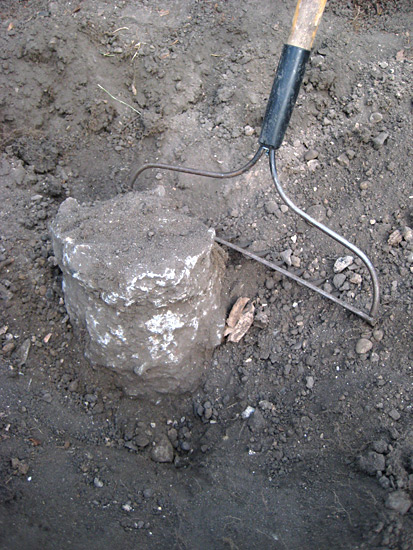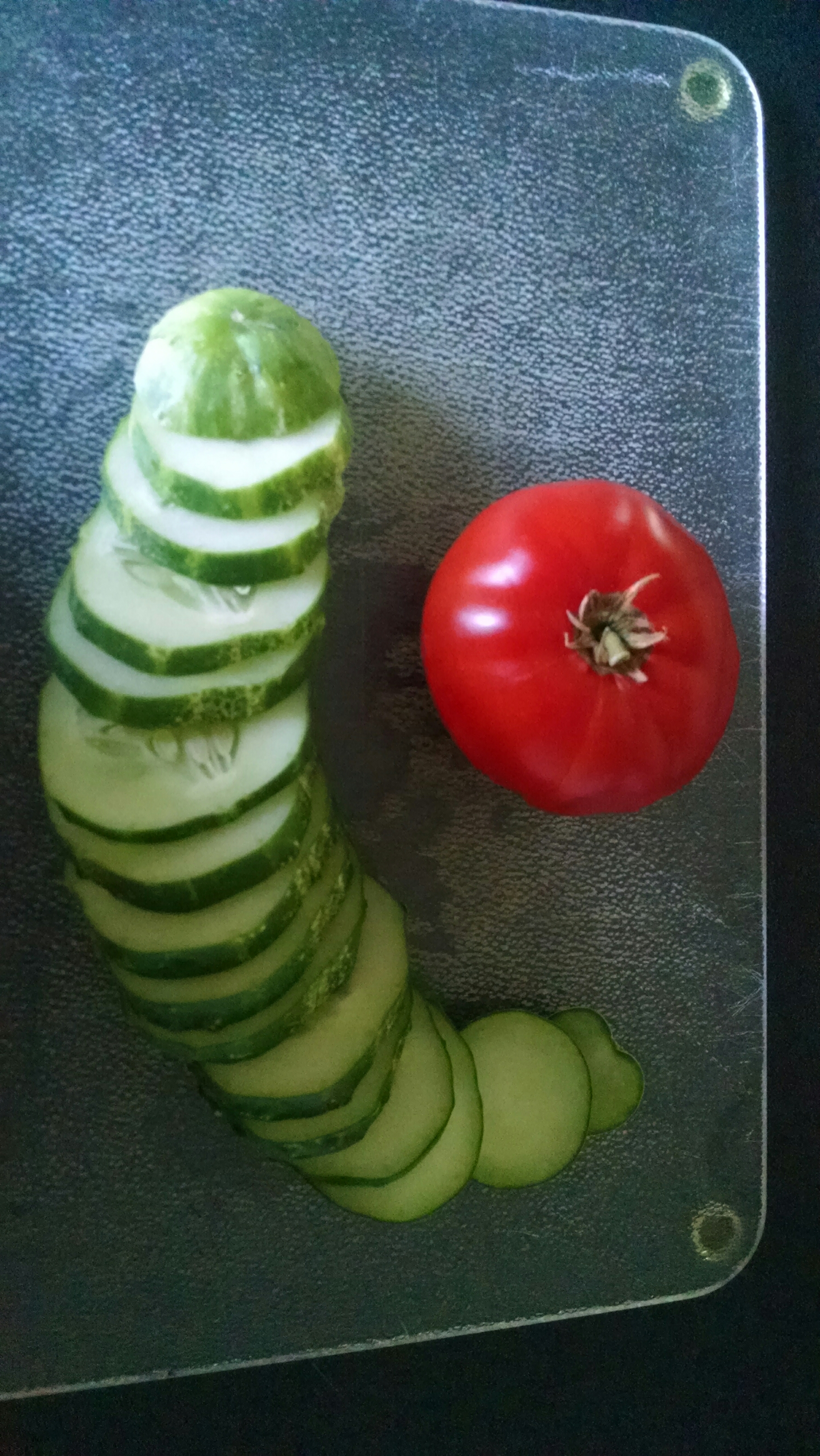Today I was able to participate in the webinar Gardening in Urban Soils, presented by Dr. Lucy Bradley from the Department of Horticultural Science at North Carolina State University. Joining her was Jon Dahl of the Soil and Plant Nutrient Laboratory at Michigan State University. The webinar focused on assessing sites for urban gardening and identifying any potential risks.
The Lot is positioned within the city and includes our house, built in the 1920s. I’ve come across many interesting items while digging around in the soil here. Here’s an example of some random foundation found when I created some of the additional beds in the backyard.

I was naturally intrigued by what type of info the webinar had to offer.
The Problem: Lack of Soil Structure
The majority of urban lots have or once have contained buildings. Most of the time prepping a site for construction includes stripping away all the top soil. It’s goodbye to any nutrients or organic matter that could have been utilized by plantings.
The Solution
The addition of organic matter to the soil lightens the soil and establishes some of the lost soil structure. Be sure when selecting organic matter, you know its source. Lawns and other plant matter exposed to pesticides would not be a good choice. Instead, look for certified compost or make your own.
The Problem: Soil Compaction
Heavy equipment is often used in construction (at times on wet soil) which creates compacted soil. It destroys good soil structure, not allowing room for plants to stretch their roots and grow.
In addition to heavy equipment, repeatedly tilling an area will eventually destroy natural soil structure. It also builds a hard pan (a dense impenetrable area) right beneath the top soil. For these reasons, tilling should not be a regular strategy in preparing soil.
The Solution
Subsoiling, a one-time deep tilling of an area, can help with compaction. However since the procedure requires renting of special equipment, the process is often costly. Another solution to compacted soil is the construction of raised garden beds. This allows you to begin gardening with control of the soil structure and texture above the existing growing area.
The addition of mulch is beneficial as it will protect the soil from erosion, moderate moisture, and gradually add organic matter as it breaks down. As with the organic matter, know the source of the mulch. It should never be made from the grinding down of pressure treated wood.
The Problem: Poor Drainage
Poor drainage can be the result of either compacted soil or soil with a high clay content. Clay particles are small so many can be packed closely together into an area, not leaving room for air or for water to drain through between them.
The Solution
According to Linda Chalker-Scott in an article with Washington State University, “An ideal soil has 50% pore space (with the remainder consisting of minerals and organic matter).” Mixing aged, organic matter into a clay soil will improve the soil texture and allow for better drainage.
The Problem: PH & Nutrient
It is not uncommon for urban soils to be nutrient starved because of irrigation and nutrient mismanagement. Many urban gardeners bag up and dispose of fallen leaves or grass clippings. They pay to have valuable, organic matter hauled away and then pay more to purchase chemical fertilizers from stores to put onto the soil. Kinda backwards, huh?
The Solution
The place to start when restoring nutrients to soil is a soil test. This is a service offered by the county Extensions office. The test will identify the existing ph and nutrients in the soil. It will also recommend how to amend the soil.
In addition, gardeners should practice nutrient cycling by mulching leaves and clippings back into lawns. This will return nutrients to the soil where plants can utilize them. Make sure clippings and leaves are shredded so they can quickly break down.
The Problem: Soil Contamination
There is always the chance urban soil could be contaminated by previous businesses or residents. Was it utilized for manufacturing? Is it located near highway or parking lot runoff? Is the property adjacent to farmland or a landfill? This could pose a risk to a gardener by ingesting contaminated soil on fruits and veggies, inhaling dust from the soil, or absorbing contaminants through the skin while working in the garden.
The Solution
Many times, you can learn the history of your urban property by contacting City Hall. They will have record of property class, zoning information, and property owners to share with you. Speaking with neighbors and environmental agencies can also yield information on past use of your urban lot.
Testing for Contaminants
Soil can be sent away to test for both organic and inorganic contaminants. Before doing so, you need an idea of what you are looking for in the soil sample. Contacting the various soil labs will yield instructions on how to prep the soil and how much the test will cost. Here are a couple mentioned during the webinar:
Soil Testing Labs
Fibertec Environmental Services
Elements Materials Technology of Indiana
Putting it All into Perspective
I appreciated Dr. Bradley’s closing statements on the subject. Yes, urban soils potentially contain contaminants, but that shouldn’t be an immediate sentence of “You shall not garden in the city.” There are many benefits to urban gardening such as knowing the source and management of your food. I’ve experienced how gardening can lead to neighbors talking to one another and beginning to build a community.
These simple practices can go a long way in reducing risks on contaminants in urban soil:
Hygiene
Wear gloves when gardening. In this way, contaminants that may be in the soil will not come into direct contact with your skin. Also, be sure to wash your hands when finished out in the garden.
Food Safety
Wash all produce from the garden. If still concerned, an extra preventative step can be taken by peeling root crops and removing the outer leaves on leafy crops. Like soil, plant tissue can be sent in and tested for contaminants.
Garden Design
If there is an area of the garden more susceptible to contaminants like a property line next to a parking lot, do not place edible plants in that area. Instead, that section of the lot can hold ornamental plants.
Additional Resources for Gardening in Urban Soils
When asking her if I could share content from her webinar, Dr. Bradley agreed and provided me with links to the pdfs she reviewed with us. These provide more detailed info on which contaminants to test for in urban soils and herbicide carryover in organic matter.
Minimizing Risks of Soil Contaminants in Urban Gardens


